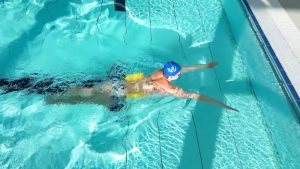Swimming offers numerous benefits for physical and mental health but can pose a challenge for individuals with stitches. The risk of infection and the potential for wound reopening looms large, leading many to question the efficacy of waterproof bandages in such scenarios. This article delves into the effectiveness of waterproof bandages for swimming with stitches, providing detailed insights into their utility, material quality, and application.
Understanding Waterproof Bandages
Material Quality and Design
Waterproof bandages stand out due to their high-quality, durable materials, such as latex-free polyurethane or silicone, which form a protective barrier against water and bacteria. Manufacturers design these bandages with an adhesive that remains secure even when submerged, ensuring the wound stays dry and clean. The thickness and elasticity of these bandages vary, but they typically measure between 0.5 to 1 millimeter in thickness, offering flexibility without compromising on protection.
Application Techniques
Applying a waterproof bandage correctly is crucial for its effectiveness. Clean and dry the area around the wound thoroughly before application. Press the bandage firmly in place, smoothing out any bubbles or wrinkles that could let water in. For extra security, especially for larger or more sensitive areas, consider using waterproof tape around the edges of the bandage.
Assessing Effectiveness for Swimming with Stitches
Protection Against Water and Infection
The primary advantage of waterproof bandages is their ability to keep the wound area dry, significantly reducing the risk of infection. This protection is vital in swimming environments, where bacteria levels can be high. The efficacy of waterproof bandages in preventing water ingress largely depends on the quality of the adhesive and the correct application. When used properly, these bandages can maintain a secure seal for extended periods, even in chlorinated pools or saltwater.
Durability and Longevity
Durability is a key factor in the effectiveness of waterproof bandages. High-quality options can withstand the pressures and motions of swimming, staying in place for several hours. However, the lifespan of a bandage varies based on the activity level and the condition of the water. On average, a waterproof bandage can last from 1 to 3 days, though manufacturers often recommend changing the bandage daily to ensure optimal protection.
Limitations and Considerations
While waterproof bandages offer substantial protection, they are not foolproof. Vigorous swimming or prolonged exposure to water can compromise their integrity. It's essential to monitor the condition of the bandage and replace it if it starts to peel or lose its adhesive quality. Additionally, consulting a healthcare professional before swimming with stitches is crucial, even with the protection of a waterproof bandage.

Conclusion
Waterproof bandages provide a feasible solution for those looking to swim with stitches, offering protection against water and infection. Their effectiveness hinges on the quality of materials, proper application, and mindful use. While they can significantly reduce the risk of wound complications, it's important to weigh the benefits against potential limitations and seek professional advice when necessary. For more information on swimming with stitches and the precautions you should take, visit can you swim with stitches.
By understanding the capabilities and limitations of waterproof bandages, individuals with stitches can make informed decisions about engaging in aquatic activities, ensuring their wounds heal properly while still enjoying the benefits of swimming.
